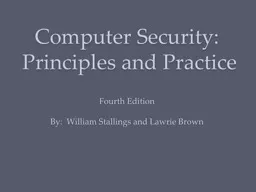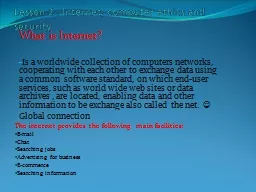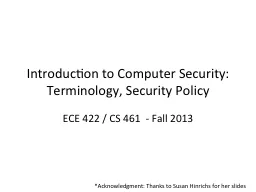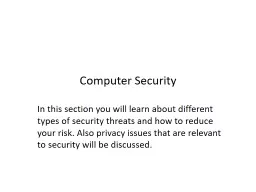PPT-Computer Security : Principles
Author : dollumbr | Published Date : 2020-08-28
and Practice Fourth Edition By William Stallings and Lawrie Brown Chapter 24 Wireless Network Security Wireless Security Key factors contributing to higher security
Presentation Embed Code
Download Presentation
Download Presentation The PPT/PDF document "Computer Security : Principles" is the property of its rightful owner. Permission is granted to download and print the materials on this website for personal, non-commercial use only, and to display it on your personal computer provided you do not modify the materials and that you retain all copyright notices contained in the materials. By downloading content from our website, you accept the terms of this agreement.
Computer Security : Principles: Transcript
Download Rules Of Document
"Computer Security : Principles"The content belongs to its owner. You may download and print it for personal use, without modification, and keep all copyright notices. By downloading, you agree to these terms.
Related Documents











![[PDF]-Computer Science Principles: The Foundational Concepts of Computer Science - For](https://thumbs.docslides.com/971110/pdf-computer-science-principles-the-foundational-concepts-of-computer-science-for-ap-computer-science-principles.jpg)
![[FREE]-Computer Science Principles: The Foundational Concepts of Computer Science - For](https://thumbs.docslides.com/992016/free-computer-science-principles-the-foundational-concepts-of-computer-science-for-ap-computer-science-principles.jpg)

